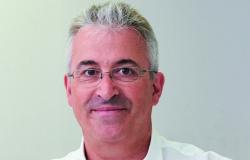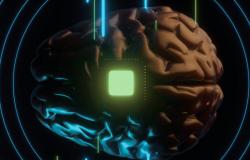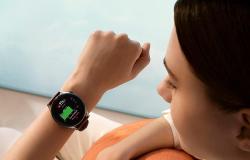rTMS has been approved as a treatment for persistent depression for more than a decade in the United States. Although its use is relatively well established in the UK and some European countries, other European countries still have some catching up to do, consultant psychiatrist Mohamed Abdelghani told Medscape Medical News.
“ rTMS has gained approval from the National Institute for Health and Care Excellence (National Institute for Health and Care Excellence, NICE) in December 2015 as a treatment for depression; it should therefore be available to most, if not all, people with treatment-resistant depression in the UK said Dr Abdelghani, who heads the London TMS Center (London TMS Center) and is the immediate past president of the TMS Clinical Society (Clinical TMS Society).
However, ” due to problems within the National Health Service (National Health ServiceNHS), adoption of this technique has been quite slow “, remarked Dr. Abdelghani. Today, around 20% of mental health services in the UK have rTMS services, he said.
Consultant psychiatrist Michael Kurkar, who collaborated with Dr Abdelghani and others on the BRIGhTMIND trial, commented: “ Every NHS unit in the UK should have this treatment available to patients, as it is a good treatment modality that is both effective and safe. » Dr Kurkar is a consultant for the health organization’s TMS department Pennine Care NHS Foundation Trust in Oldham.
He explained to Medscape Medical News that rTMS is non-invasive, unlike other treatments such as seismotherapy (or electroconvulsive therapy, ECT), “ which is not suitable for everyone. rTMS can be a lifesaver for people in whom treatment with antidepressants has failed and who therefore suffer from treatment-resistant depression. “, did he declare.
Is Europe catching up?
Drs. Abdelghani and Kurkar were early adopters of rTMS. In 2016, Dr Abdelghani established the first specialist TMS clinic in London (the second in the UK), within the healthcare organization Camden and Islington NHS Foundation Trust, which he still directs today. For his part, Dr Kurkar was the first to establish a rTMS clinic in North West England.
Speaking at the end of a session titled “ Transcranial Magnetic Stimulation: The Miracle Weapon Against Depression and OCD? » (Transcranial magnetic stimulation: the miracle weapon against depression and OCD?), Drs Abdelghani and Kurkar noted that it was interesting to hear how the method was used in other European countries.
“ There are no clear European recommendations on how to proceed “, said Dr. Abdelghani. “ In the UK we have at least the NICE recommendationsbut health care structures in different parts of the world are still catching up. »
In Hungary, for example, rTMS is not yet available in routine clinical practice, as Dr. Judit Lazáry, Director of Department of Psychiatry B at the National Department of Mental Health, Neurology and Neurosurgery, pointed out at Budapest, Hungary, for EPA 2024.
Between 2020 and 2023, Dr. Lazáry and her colleagues received European funding to run a national rTMS center in Budapest, to study the safety and effectiveness of the method for both TDC and OCD. According to her, several studies “ confirmed the safety of rTMS [et] patients tolerated it very well “.
“ Using rTMS in combination with antidepressants reduces depressive symptoms, anxiety symptoms, and anhedonia, while may increase appreciation of positive experiences, resilience, and treatment adherence. [antidépresseur]. »
Dr. Lazáry and her team also found that rTMS had beneficial effects in the treatment of OCD and less severe forms of depression, suggesting that its use could be expanded to more patients in need of treatment. adjunctive therapy.
A dynamic domain
rTMS is just one type of neuromodulation that could be used to help people with treatment-resistant or difficult-to-treat depression, said Dr. Bernhard T. Baune, professor of psychiatry and chair of the Department of Psychiatry and Medicine. psychotherapy at the University of Münster, Germany, during EPA 2024.
Conventional rTMS can be high or low frequency, targeting the left or right dorsolateral prefrontal cortex (DPFC), or both, respectively, to correct suspected hypoactivity or hyperactivity. Then there is theta-burst stimulation, used intermittently on the left CPFDL or continuously on the right CPFDL, as well as accelerated protocols in which more than one treatment session is administered daily.
“ When we need a combination of treatments, it is possible to combine TMS with pharmacological treatment very satisfactorily. At our university hospital we also have experience in combining TMS with psychotherapy, but also with other treatment modalities such as vagus nerve stimulation (VNS), ketamine and ECT “, said Dr. Baune.
“ I think the field remains very dynamic », added Dr Baune. “ We are currently in a flourishing phase where the combination of these treatments is very promising. »
Dr Abdelghani commented on the cost of setting up an TMS service, pointing out that treating people with difficult-to-treat depression is already very expensive for the healthcare system.
“ Off the bat, some people may think that TMS is expensive. However, according to the BRIGhTMIND trial, there is every reason to believe that it saves money. So it comes down to investing in the future. »
Results of the cost-effectiveness analysis and other secondary analyzes of the BRIGhTMIND trial are expected to be published soon.
Funding and links of interest
The experts cited in this article have disclosed no relevant financial relationships or funding.
This article was translated from Medscape.com using multiple editorial tools, including AI, in the process. The content was reviewed by the editorial staff before publication.







